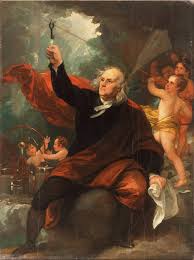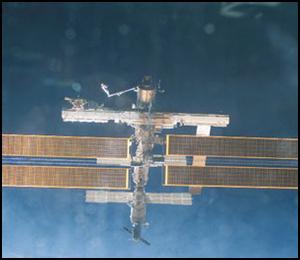Electrical Power
Nature's Electricity
Lightning is nature's electricity. It has always been here on earth; negative charged electrons, are brushed off by evaporating moisture and wind into the clouds. Ultimately the clouds gain a high level of electrical charge compared with the surroundings. Finally, there is a giant electrical discharge in the atmosphere by electrons rushing to the ground or other clouds to resolve the imbalance in charge.
Benjamin Franklin didn't discover electricity but he did show that lightning and frictional electricity were the same. Prehistoric people knew all about frictional electricity; rubbing Amber (brushing off electrons) would develop materials that attracted each other. Electrostatic entertaining demonstrations were popular during the 1700’s; a Van de Graff Generator that would make gigantic sparks and make your hair stand on end.
Modern Electricity
In early 19 century, Alessandro Volta demonstrated electricity with a battery.Today, the technology is well developed. Forcing a wire of electrons through a magnetic field generates electricity. A wire of Electrons flowing in a magnetic field creates a force. Thus, a generator converts mechanical work to electricity and an electric motor converts electricity to mechanical work.


Electricity Today: Explained
Fossil Fuels and Nuclear Electricity

Today, turbine steam generators fired mostly with fossil fuels and some nuclear provide most electricity on earth. With applied force electrons can be made to flow in flexible metal wires. Metals like copper and aluminum have have a sea of free elections available for the process. The flow rate of electron charge in a conductor past a point is called electric current and it is measured in amperes. The driving force is the electric potential and it is measured in volts and the product of amps x volts is power, measured in watts. In most applications the electrons move very slowly, about one inch per minute. With alternating potential the current reverses direction 50 or 60 times a second: so essentially electrons barely move but the wave of energy they carry travels at the speed of light.
Photovoltaic (PV) Electrical Power

PV Technology coverts solar energy directly into electricity. Edmund Becquerel first discovered the phenomena in 1839 but it wasn't’t until 1953 when researchers at Bell Labs perfected the modern commercial version in use today.
Wind Electrical Power
 Wind Energy is a renewable resource for which the technology has matured enough to compete with conventional sources of electricity in areas with good wind resources. Wind plants are now routinely providing power, integrated with other conventional generating plants, into the utility grids in many countries around the world. Modern wind machines use airfoil lift rather than drag to get the axial force required to drive an
electric generator
Wind Energy is a renewable resource for which the technology has matured enough to compete with conventional sources of electricity in areas with good wind resources. Wind plants are now routinely providing power, integrated with other conventional generating plants, into the utility grids in many countries around the world. Modern wind machines use airfoil lift rather than drag to get the axial force required to drive an
electric generator
Electrical Energy Future
New electric energy technology is needed in the future because of expanded demand that will require many changes in production, transmission and applications.
